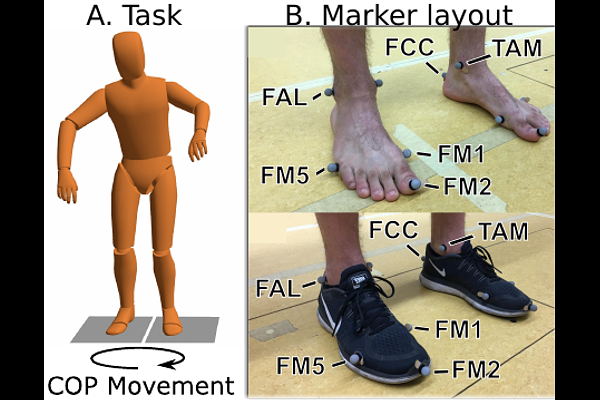A polygon model of the functional base-of-support improves the accuracy of balance analysis

A polygon model of the functional base-of-support improves the accuracy of balance analysis
Millard, M.; Sloot, L. H.
AbstractMathematical balance models have the potential to identify people at risk of falling before an injury occurs. However, most balance models depend on a model of the base-of-support (BOS) of the feet to calculate how well someone is balancing. Here we evaluate the functional base-of-support (fBOS): the convex polygon on the bottom of the foot that can support a large fraction of the body\'s weight. First, we develop a geometric model of the fBOS by measuring the center-of-pressure (COP) and kinematic data of the feet of 27 younger adults instructed to move their body mass in large loops without taking a step. We extract a planar convex polygon that contains the COP data. Finally, we compare the area of this fBOS model to a marker-based BOS model before evaluating if the fBOS differs across four everyday conditions: footwear, stance-width, foot dominance, and during single and double stance. We found that the fBOS is much smaller (23% the size) than a marker-based BOS model. Our analysis suggests that using the fBOS, rather than a marker-based BOS, can improve the accuracy of the margin-of-stability by 20% of foot width and 16% of the length. In addition, we found that the fBOS area does not differ across footwear (p=0.88), stance-width (p=0.88), and foot dominance (p=0.68), but during single stance the fBOS is 17% (p=0.0003) larger than during double stance. So that others can use and extend our work, we have made the models, example data and code publicly available.